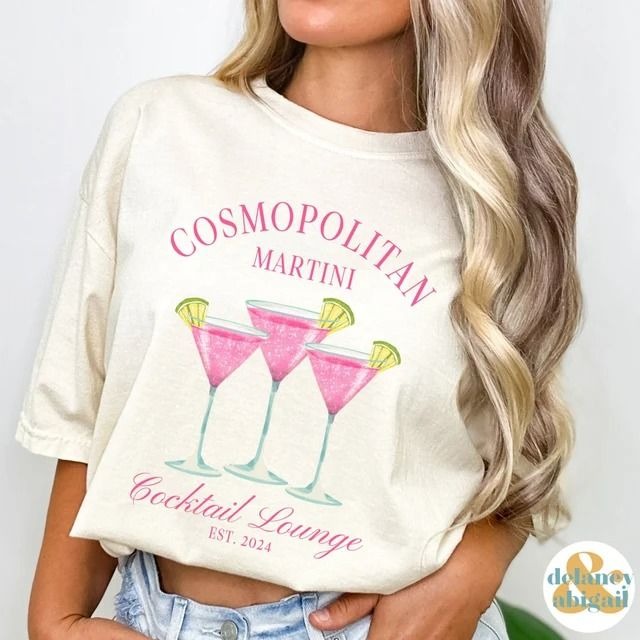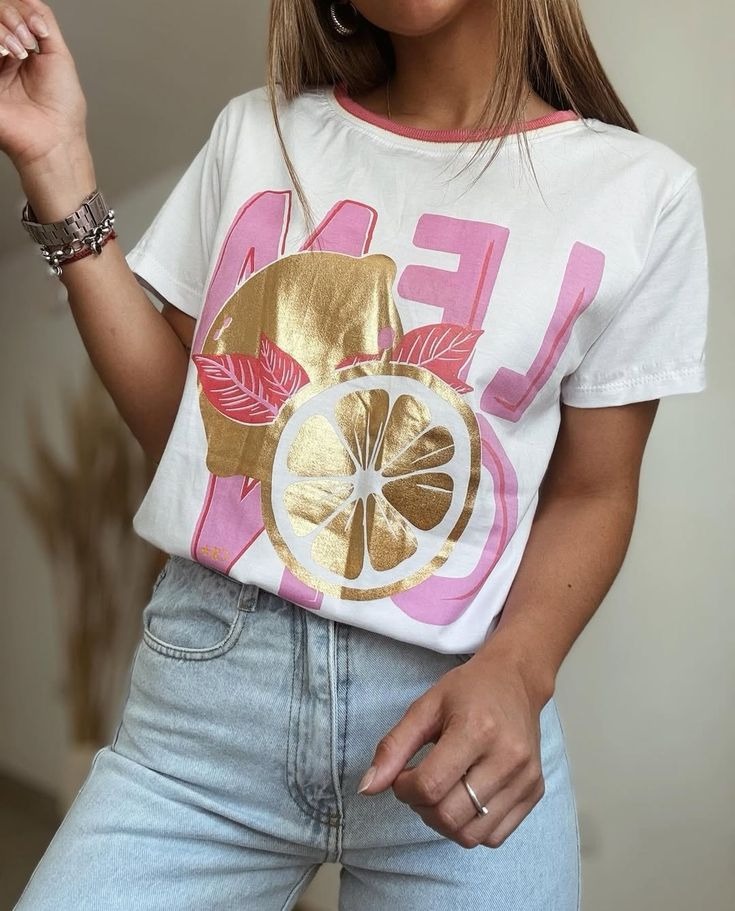Introduction
The T-shirt remains a deceptively simple garment whose ubiquity belies a rich tapestry of histories, cultural resonances, technological transformations, and economic complexities. Initially conceived for practicality and comfort, it has evolved into a platform for personal expression, a marker of collective identity, and a node in a vast global industry. In this extended exploration, we delve into deeper layers of the T-shirt’s journey, tracing its transformations across decades and continents, examining its role in diverse subcultures, interrogating ethical and environmental debates, and imagining its future in an age of technological convergence and shifting consumer values.
Historical Origins and Early Adaptations
Long before the term “T-shirt” entered everyday parlance, garments approximating its form appeared in contexts prioritizing ease and simplicity. In temperate or tropical climates, laborers and naval personnel sought lightweight underlayers to manage heat and moisture. By the early twentieth century, militaries in several nations began issuing short-sleeved, crew-neck cotton shirts as part of standard undergarments. The United States Navy’s formal adoption of such shirts for sailors during the early 1910s signified a shift away from heavier long-sleeved linen or wool underclothes. These shirts served a purely functional role, absorbing sweat and improving comfort under cumbersome uniforms. Their plain appearance and minimal construction meant they rarely emerged beyond the laundry pile—until cultural forces began to shift perceptions of acceptable outerwear.
A gradual trickle of servicemen and laborers wearing these shirts openly helped erode taboos about visible undergarments. In certain tropical colonies and ports, locals observed and sometimes adopted the lightweight shirts for daily wear. Meanwhile, photographic evidence from early twentieth-century archives reveals casual portraits of workers clad in simple short-sleeved cotton garments, suggesting informal adoption well before mass fashion embraced the style. The convergence of practical need, colonial interactions, and evolving social norms set the stage for the T-shirt’s emergence beyond its original context.
The T-Shirt and the Rise of Mass Media Imagery
Cinema and photography played pivotal roles in redefining the T-shirt’s cultural valence. In mid-twentieth-century Hollywood, stars wearing plain cotton shirts in scenes of rebellion or casual leisure projected an image of approachable defiance. Iconic moments on screen featured protagonists leaving home in a white shirt and jeans, a motif that resonated with audiences seeking authenticity and relaxed style. Press photographs of celebrities, models, or athletes in similar attire further catalyzed public acceptance of the T-shirt as outerwear. Magazine spreads and advertisements began to depict the shirt not merely as a utilitarian base layer but as a standalone item signifying youthful energy and modern simplicity.
This recontextualization coincided with broader social changes. As consumer culture expanded after the Second World War, clothing production scaled up, distribution networks widened, and fashion norms loosened around formality. The T-shirt became emblematic of these shifts. Its neutral canvas—often plain white or muted tones—offered a blank slate onto which aspiring designers, advertisers, or individuals could project messages, logos, or personal tastes. The democratization of fashion, wherein garments once reserved for private or subordinate roles acquired newfound visibility, rested in part on the T-shirt’s pliability to various narratives.
Artistic Expression Through Graphics and Print
When screen printing and other fabric-printing techniques matured in the latter half of the twentieth century, the T-shirt transcended fabric to become wearable art. Musicians turned tour merchandise into coveted items, emblazoning album artwork, lyrics, or band names across chests. Activists adopted the medium for rallying slogans, symbols, and portraits that broadcast convictions on streets and at gatherings. Independent artists found a route to share designs widely, collaborating with small print shops or using emerging digital tools to transfer images onto cotton. Each shirt carried a story: a memory of a concert, a stance on social issues, a personal aesthetic preference.
This flowering of graphic T-shirts also raised questions about intellectual property, appropriation, and authenticity. Designs referencing cultural icons or borrowed imagery sometimes sparked controversy over permission and compensation. Fan-made shirts circulated in informal markets, challenging official merchandise channels and prompting rights holders to consider alternative licensing models. In parallel, the rise of do-it-yourself communities empowered enthusiasts to experiment with hand-painted or dyed shirts, reviving artisanal approaches and fostering small-scale creative economies. The graphic T-shirt thus became a contested space where creativity, commerce, and ethics intersected.
Globalization and Regional Interpretations
As production and distribution networks globalized, the T-shirt emerged as one of the most traded apparel items worldwide. Factories in different regions catered to mass-market demand, leveraging economies of scale to supply retailers at competitive prices. Yet the garment’s adoption varied across geographies and cultures, resulting in region-specific styles, slogans, and uses. In some countries, local political movements used printed shirts to signal solidarity or dissent, employing familiar symbols and language suited to domestic audiences. In others, traditional motifs or artisanal techniques integrated with the T-shirt form, blending heritage crafts with modern silhouettes.
Tourism and travel further disseminated T-shirt culture. Visitors purchased shirts bearing local landmarks, idiomatic phrases, or stylized graphics as souvenirs. These items both commodified cultural icons and facilitated cross-cultural exchange, though sometimes veering into superficial or stereotypical representations. Meanwhile, secondhand clothing markets circulated T-shirts across borders, enabling garments produced in one locale to find new life in another, influencing local fashion sensibilities. The result was a dynamic interplay between global uniformity—white or basic tees as wardrobe staples—and localized reinvention, where colors, prints, and fits reflected diverse tastes and identities.
Economic Dynamics and Industry Transformations
Behind each T-shirt lies a complex supply chain stretching from raw materials to retail shelves. Cotton cultivation, often concentrated in specific regions, involves considerations of land use, water consumption, labor conditions, and market volatility. Alternative fibers such as organic cotton, bamboo-derived fabrics, or recycled synthetic blends have entered production in response to environmental and ethical pressures. Yet these options may carry higher costs or technical challenges, influencing pricing and consumer uptake. Manufacturing processes encompass spinning, knitting, dyeing, printing, finishing, and distribution logistics. Each stage presents opportunities for innovation, cost reduction, or sustainability improvements, but also risks of exploitation or environmental harm if not managed conscientiously.
The retail landscape for T-shirts spans fast-fashion chains offering low-priced basics, mid-tier brands emphasizing design or niche appeal, and luxury houses presenting limited-edition pieces commanding premium prices. Online marketplaces and direct-to-consumer platforms have disrupted traditional wholesale-retail relationships, enabling small designers to reach global audiences without brick-and-mortar intermediaries. Crowdfunding campaigns have financed custom T-shirt lines, while print-on-demand services allow minimal inventory overhead. These developments reshape industry economics, empowering entrepreneurs yet intensifying competition and market fragmentation.
Sustainability Challenges and Ethical Movements
The sheer volume of T-shirt production contributes significantly to environmental concerns. Conventional cotton farming can be water-intensive and reliant on pesticides. Dyeing and finishing processes may involve chemicals that pollute waterways if wastewater is not effectively treated. Overproduction and rapid consumption cycles lead to textile waste, with discarded shirts often ending up in landfills or incinerators. In response, movements advocating slow fashion encourage durable designs, repair and upcycling practices, and mindful purchasing. Some brands emphasize transparency through certifications or traceability platforms, allowing consumers to verify ethical sourcing and fair labor standards.
Efforts to reduce waste include recycling post-consumer garments into new fibers or repurposing fabric scraps for accessories or patchwork designs. Collaborative initiatives between industry players, non-profit organizations, and governments explore circular economy models that aim to keep textiles in use longer and recover materials at end of life. Educational campaigns highlight the environmental footprint of a single T-shirt, encouraging individuals to consider longevity and care practices that extend garment life. The tension between low-cost commodities and sustainable alternatives remains a central debate, reflecting broader societal choices about resource use and collective responsibility.
Technological Advances in Fabric and Design
Innovations in textile science continually expand the T-shirt’s capabilities. Performance fabrics with moisture-wicking, quick-drying, antimicrobial, or UV-protective properties cater to active lifestyles and specialized use cases. Blends combining natural and synthetic fibers aim to balance comfort with durability. Emerging developments include fabrics that adapt to temperature changes, fabrics embedded with microcapsules for controlled release of fragrances or skincare ingredients, and preliminary experiments with conductive threads for wearable technology integration. Custom-fit technologies, such as 3D body scanning and digital pattern-making, promise personalized sizing that reduces returns and enhances wearer comfort.
On the design front, digital printing and direct-to-garment techniques allow high-resolution, full-color images with minimal setup, opening possibilities for intricate art reproductions or photographic prints. Virtual sampling tools shorten design cycles, enabling designers to visualize colors, textures, and fits in digital environments before committing to physical samples. Augmented reality applications allow consumers to preview how a T-shirt might look on their own bodies via smartphone cameras, influencing purchasing decisions. As technology converges with fashion, the T-shirt remains a prime testing ground for integrating novel capabilities while retaining its core appeal of simplicity.
Customization and Personalization Trends
The desire for unique and meaningful garments fuels customization trends. Online platforms facilitate users uploading their own artwork or text to create one-off T-shirts. Local print shops offer services for events, small businesses, or personal gifts, often with quick turnaround. Artisans incorporate handcraft techniques—such as embroidery, tie-dye, block-printing, or appliqué—onto T-shirt bases, blending mass production with individual creativity. Social media platforms amplify these offerings, allowing creators to showcase portfolios and connect with niche audiences. The interplay between digital tools and traditional craftsmanship fosters diverse approaches to personalization.
Customization also extends to collaborative designs between brands and communities. Crowd-sourced design contests invite fans to submit ideas, with winners seeing their creations produced and sold. Charitable organizations harness custom shirts to fundraise, engaging supporters who wear the cause visibly. These practices deepen emotional connections between makers, brands, and consumers, though they also raise questions about intellectual property rights, fair compensation for contributors, and the true environmental impact of limited-run productions.
Social Movements and the T-Shirt as Activist Canvas
The T-shirt’s role in activism endures as a visible, mobile medium for messaging. During protests, marches, or awareness campaigns, participants don shirts bearing slogans, symbols, or portraits that encapsulate demands or solidarity. Historical movements leveraged screen printing to mass-produce shirts for distribution, while contemporary activists use online platforms to design, fund, and ship shirts globally. The immediacy and affordability of T-shirts make them effective tools for spreading awareness, fundraising, or fostering group cohesion. At the same time, critics note that wearers sometimes risk performative activism if shirts are purchased without deeper engagement in causes. Conversations about the ethics of activist merchandise reflect a broader concern about commodification of social issues and the balance between symbolic support and substantive action.
The T-Shirt in Subcultures and Streetwear
Subcultures have long adopted the T-shirt as a badge of belonging. Punk, skateboarding, hip-hop, gaming, and other scenes emblazon shirts with insider references, logos of favorite labels or artists, or graphics that signal attitudes and values distinctive to the group. In streetwear culture, limited-edition drops and collaborations transform ordinary cotton garments into hype items, with lines forming at stores or online releases selling out within minutes. Secondary markets trade these shirts at marked-up prices, illustrating how a basic garment becomes a status symbol. These dynamics reveal how scarcity, hype, and cultural capital operate within youth-driven fashion ecosystems, with the T-shirt at their core.
High Fashion and Collaborative Endeavors
High-end designers periodically revisit the T-shirt, incorporating luxury materials, artisanal techniques, or conceptual messages into limited collections. A simple cotton shirt may be reimagined with embroidery, embellishments, unconventional silhouettes, or premium fabric blends. Collaborations between luxury houses and streetwear brands blur traditional distinctions, elevating the T-shirt to collectible art object status. Such collaborations often generate significant media attention, underscoring the garment’s cultural centrality. However, they also highlight disparities between mass-produced basics and high-priced iterations, provoking debates about accessibility, exclusivity, and the democratization of fashion.
Psychology of the T-Shirt: Comfort, Identity, and Memory
At a personal level, many individuals form attachments to specific T-shirts. A favorite shirt may recall memorable experiences—a concert attended, a trip taken, a cause supported—or become part of a daily uniform that offers comfort and reassurance. Psychologists note that clothing choices can influence mood and self-perception; the T-shirt’s simplicity allows wearers to project aspects of their identity without feeling constrained by formality. The act of receiving or gifting a shirt carries emotional weight, often tied to relationships or group affiliations. In this way, the T-shirt embodies both the mundane and the meaningful, bridging internal feelings and external expressions.
Care Practices and Longevity
Extending the life of a T-shirt requires mindful care. Washing inside-out, using gentle detergents, and avoiding excessive heat in drying preserve fabric integrity and printed designs. Repair practices—such as patching holes, reinforcing seams, or reprinting faded graphics—allow beloved shirts to endure beyond typical disposal points. Some consumers document these practices on social media, inspiring others to value longevity over replacement. Mending circles and workshops revive traditional sewing skills, fostering community engagement around sustainable fashion. These approaches counteract throwaway culture, encouraging a deeper relationship between individuals and their wardrobes.
Challenges of Labor and Fair Practices
Labor conditions in textile and garment production remain a critical concern. Factories producing T-shirts may employ large workforces under conditions that vary widely by region and brand oversight. Advocacy for fair wages, safe working environments, and workers’ rights has prompted some brands to audit supply chains, publish transparency reports, or pursue certifications. Yet supply chains can be opaque and complex, with subcontracting and informal production complicating accountability. Consumers increasingly seek evidence of ethical sourcing, but verifying claims can be challenging. Collaborative efforts among industry stakeholders, non-governmental organizations, and governments strive to create standards and enforcement mechanisms, though progress is uneven and ongoing vigilance remains necessary.
Impact of Digital Platforms on T-Shirt Culture
The advent of e-commerce, social media, and digital design tools has reshaped how T-shirts are created, marketed, and consumed. Designers can reach international audiences without physical stores. Influencers showcase styling ideas, driving trends and fueling viral demand for particular graphics or slogans. User-generated content amplifies grassroots movements, with individuals sharing images of themselves wearing cause-related shirts or custom designs. Data analytics inform brands about consumer preferences, guiding design and inventory decisions. However, digital saturation also means shorter trend cycles and pressure on brands to constantly refresh offerings, potentially exacerbating overproduction and waste if not balanced by sustainable strategies.
Educational and Institutional Uses
Beyond commerce and culture, T-shirts serve roles in educational and institutional contexts. Schools often distribute shirts to create unity among students or commemorate events. Non-profit organizations provide shirts to volunteers or donors, strengthening community bonds and visibility. In corporate settings, branded tees support team-building activities or promotional campaigns. Medical institutions sometimes use specialized T-shirts for patient identification or therapeutic engagement. Each application underscores the T-shirt’s adaptability: its basic form accommodates printing, embroidery, or other modifications suited to varied functional requirements while maintaining wearer comfort.
Regional Craftsmanship and Small-Scale Producers
While large-scale manufacturing dominates much of the T-shirt market, pockets of regional artisans sustain small-batch production rooted in local traditions. Hand-dyed techniques, block printing, or native embroidery may adorn simple shirt forms, creating unique pieces that blend heritage aesthetics with contemporary wearability. These practices often aim to preserve cultural knowledge and support local economies. Consumers drawn to artisanal garments may pay premiums for craftsmanship, contributing to community livelihoods. Scaling such efforts remains a challenge, but digital platforms can connect artisans with global audiences, enabling sustainable growth without compromising authenticity.
Future Directions: Smart Textiles and Wearable Technology
Advances in smart textiles promise to integrate electronics, sensors, and connectivity into T-shirt designs. Early prototypes include shirts that monitor biometric data, adjust insulation levels, or interact with mobile devices. While commercialization remains in nascent stages, research continues into washable circuits, energy-harvesting fabrics, and flexible displays. Such innovations could transform the T-shirt from static garment to interactive interface, with applications in health monitoring, sports performance, or entertainment. Balancing technological integration with comfort, durability, and affordability will determine widespread adoption. The inherent neutrality and familiarity of the T-shirt form may facilitate acceptance of novel functionalities among consumers.
Toward Circularity and Regenerative Practices
The vision of a circular economy for textiles positions the T-shirt as a key focus. Systems that collect worn shirts for recycling or remanufacturing aim to reduce reliance on virgin materials. Biodegradable fibers and closed-loop processing technologies could further minimize environmental impact. Designers experimenting with modular garments envision shirts whose components can be replaced or repurposed, extending useful life. Collaborative initiatives among brands, recyclers, and policymakers seek to implement take-back programs and infrastructure for textile recovery. Consumer education about repair, resale, and recycling options underpins these strategies. Achieving meaningful circularity will require coordinated efforts across the industry and shifts in consumption habits.
Reflections on Consumer Responsibility and Collective Action
The future of the T-shirt reflects broader societal choices regarding consumption, culture, and technology. Each wearer influences demand patterns; opting for durable, ethically produced garments or repairing and repurposing existing shirts signals a departure from disposable mindsets. Collective action—through advocacy, purchasing decisions, or participation in circular initiatives—can drive industry shifts toward transparency and sustainability. At the same time, systemic changes in production, policy frameworks, and technological infrastructure remain essential. Recognizing the T-shirt’s symbolic and material dimensions encourages a holistic perspective: appreciating its role as an everyday object while acknowledging the complex networks behind its existence.
Conclusion
The T-shirt’s journey from humble undergarment to multifaceted cultural phenomenon underscores its adaptability and resonance. It has borne witness to social revolutions, artistic movements, market upheavals, and technological breakthroughs. As a blank canvas, it amplifies individual voices; as an industrial staple, it exemplifies both the potentials and pitfalls of global manufacturing. Looking ahead, innovations in fabrics, digital tools, and circular systems promise to further transform this garment, yet its core appeal—comfort, simplicity, and capacity for expression—remains unchanged. By embracing mindful creation, responsible consumption, and imaginative design, stakeholders across the spectrum can ensure that the T-shirt continues to embody creativity, community, and conscientious progress for generations to come.




